Castleroberts
Houses within 15km of this house
Displaying 145 houses.
Houses within 15km of Castleroberts
Displaying 145 houses.
| House name | Description | |
|---|---|---|
| Odell Ville | This house was occupied by John Odell in the early 1850s and held by him in fee. It was valued at almost £14. The house was the residence of William Odell in the 1870s. Home of the Morony and Lloyd families in the late 19th and 20th centuries. Occupied by Wilfrid H. Wilkinson in 1906. It was advertised for sale in February 2009. |

|
| Clonmacken | Built in 1700 by Reverend Edmund Palmer according to the Ordnance Survey Field Book, this two-storey house was occupied by Henry D'Esterre in 1814, by Captain Vereker in 1834 and by 1839 was the seat of John Brown Finch. In the early 1850s it was the residence of John Sharp, situated on the Lansdowne estate, it was held from Lawrence Kelly. | |
| Clorhane | Home of Thomas Dalton in the mid 18th century and of the Fosbery family in the 19th century. Held by George Fosbery junior at the time of Griffith's Valuation when the buildings were valued at £11. Home of Francis Wise Browning in the early part of the 20th century following his marriage to Jane Philippa Fosberry daughter and co heiress of Thomas Fosberry of Kilgobbin and Clorane. Cussen writes that this house is now demolished. | |
| Curraghbridge | Located on the Bury estate and home of a branch of the Fosbery family for much of the 18th and 19th centuries. Taylor and Skinner record the occupant as the Reverend Mr Westrop in the late 1770s. ''Burke's Irish Family Records'' records Thomas Westropp of Curraghbridge, father of the Reverend Thomas Westropp rector of Doonass. The residence of G. Fosbery in 1814 and in 1837. Described circa 1840 as in good repair and comprised of 4 storeys. Occupied by Samuel Dixon Power in the early 1850s who held the house and 197 acres from George Fosbery. It was later occupied by S.D. Power's son-in-law, Edmond Langley Hunt. A house is still extant at this site. | |
| Currah Chase | This was an 18th century house with early 19th additions, home of the Hunt/De Vere/ Vere O'Brien family. In 1906 it was valued at £57 and was occupied by Henrietta L. De Vere. Bought by the Forestry Department in the 1940s the house was destroyed by fire in 1949. |
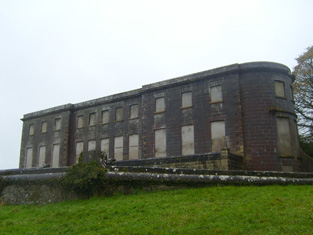
|
| Farm Lodge | Marked as Farm Lodge on the first Ordnance Survey map this house on the De Vere estate was occupied by James Potter in the early 1850s when it was valued at £16. An extensive farm still exists at the site. | |
| Rockfield | The residence of Edward Fitzgerald in the first half of the 19th century, held by him from Captain Richard Gloster at the time of Griffith's Valuation and valued at over £11. | |
| Cartown | Built in 1763 Cartown was the residence of Mr Baldwin in 1826 and of John Edward Langford in 1837. In the early 1850s Griffith's Valuation records the vacant house as valued at £24, William Sheedy holding the whole townland from General James Caulfeild. By the late 19th century the house was in the possession of the Westropp family. This house is still extant and occupied. |

|
| Mellon | The Westropp family are recorded as "of Mellon" from the early 18th century. Bence Jones dates the present house from circa 1780, the Ordnance Survey Field Name Books from 1812. Inhabited by Mrs Jane Westropp (nee Dawson) in the early 1850s. It was valued at £36. This 3 storied house was still in Westropp possession in the late 20th century. It is now run as a stud. |
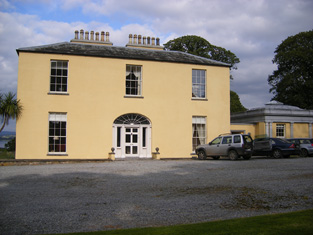
|
| Mount Pleasant | The Ordnance Survey Name Books record that this house was built in the mid 18th century by a Mr Star. It was a neat farm house occupied by Mrs Hill in 1837 and by Thomas Hill at the time of Griffith's Valuation. He held the property from Daniel Leahy and the buildings were valued at over £11. This house is still extant and occupied. |
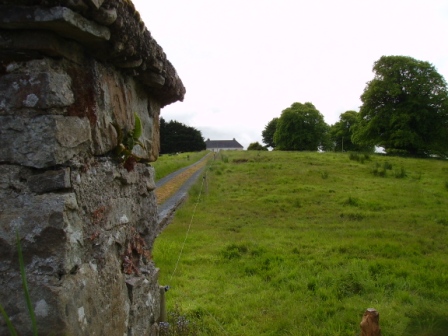
|
| Shannon Grove | Originally the home of the Bury family, Earls of Charleville, overlooking the Shannon estuary. The Ordnance Survey Name Books record this house as four-storied, built in 1709. Bence Jones dates this house from the early 18th century. Lewis writes that Shannon Grove was the old family mansion of the Earls of Charleville and "now the residence of Bolton Waller". Bolton Waller held the property in fee in the early 1850s when the buildings were valued at £43 and the demesne was over 400 acres. Bought by John Sheehy of Askeaton in 1860 and remained in the possession of his descendants until the mid 20th century. The house is still extant and occupied. |
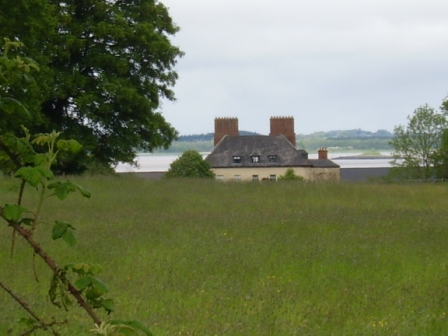
|
| Kilbreedy | A house occupied by Michael Nash at the time of Griffith's Valuation and held from the Reverend William Waller, valued at £11. | |
| Stonehall | A house built 1803 and situated on the Waller estate in the mid 19th century and occupied by the Langford family from at least the early 19th century. This house is still extant and occupied and the property includes an open farm. |

|
| Copsewood | Copsewood Cottage is marked on the first Ordnance Survey map at this site. A much larger house was built in the mid 19th century for Major General Caulfeild. It was valued at £36 at the time of Griffith's Valuation and at £63 in 1906. It remained in the possession of the General's descendants until 1919 when it was bought by the Salesian Fathers who started an agricultural school. It is now a secondary school run by the Salesian Order. |

|
| Summerville | Described by Lewis as an ancient seat of Lord Charleville "now occupied by an agent". In the early 1850s Patrick and Michael O'Donnell were resident and they held the property from General James Caulfeild. | |
| Milltown | The Reverend Champagne was resident at Milltown from at least 1837. He is recorded as the occupier of this house in the early 1850s when he held the house valued at £28 from the Reverend Tyrell Evans. | |
| Holly Park | In 1786 Wilson describes Holly Park as "the seat of Richard Taylor, it is very commodious and well-situated, having convenient offices and extensive demesnes". Lewis writes that Holly Park was the ancient residence of the Taylor family "now the property of Sir Aubrey de Vere". However Griffith's Valuation records Richard Taylor holding Holly Park in the early 1850s in fee. It was valued at £36. In 1894, Slater referred to it as the seat of George Taylor and in 1906 George Taylor held 277 acres of untenanted land and a mansion house valued at £34 at Currahchase North. Sold by the Taylors in 1939. Feheney writes that the son of Tom Clarke, one of the leaders executed in 1916, bought Holly Park from the Land Commission in the 1940s. The home of John Philip Cohane in the 1970s who had restored the house after a fire. It is still extant. | |
| Ballynolan | This 3 storied house was the seat of the Reverend Thomas Westropp, rector of Ardcanny, built by him [his father?] in 1797. It was occupied by H. Potter esquire in 1837 and by Peter W. Morgan at the time of Griffith's Valuation who held it in fee with a demesne of 98 acres. Valued at £11.10 shillings in 1906 and occupied by Sarah E. M. Westropp. Still extant and occupied. |
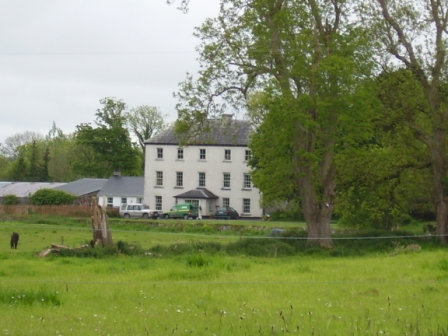
|
| Bolane | Bollane Cottage was occupied by Arundel Hill in 1837. A house at Bolane was the residence of Thomas Hanly in the early 1850s and valued at £16. It was held from Daniel D. Power. A house is still extant at this location and occupied. |
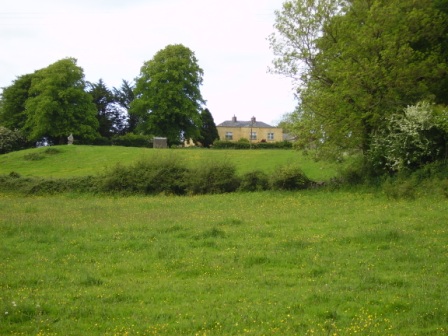
|
| Ballynacarriga | The Ordnance Survey Field Name Books describe this house as "falling into decay", the property of Mr Enright. By 1837 a Mr Dawson was the proprietor of Ballynacarriga House and in the early 1850s it was occupied by Dawson L. Westropp. In 1906 Ballynacarriga valued at £20.10 shillings was occupied by Norris Richard Russell. | |
| Ballynacarriga | Built in 1819 this house was occupied by a member of the Hill family at the time of the Ordnance Survey who was renting the property from Mrs Hurst . Lewis records H. Hurst as resident in 1837 and in the early 1850s Captain Richard Gloster held this house valued at £21 in fee. This house is now known as Rockfield. |

|
| Castlegrey | A house in the possession of the Langford family in the 19th century, the residence of G. Langford in 1837 and of Charles Wiedenham Fosbery in the early 1840s and 1850s. He held the property from Mrs Jane Langford. It was valued at £11. Slater refers to it as the seat of Captain Frederick Verschoyle in 1894. Some buildings are still extant at the site. | |
| Court/Kildimo Court | In 1837 Lewis wrote that Kildimo Court "which is nearly entire was the seat of the Hartstonge family". The Hartstonges appear to have inherited this property from the Widenhams. In 1786 Wilson refers to Court as the seat of Sir Harry Hartstronge and notes that "a bridge is now building at the ferry of Court but the house is in ruins". The property called Court Castle is labelled "in ruins" on the 1st edition Ordnance Survey map. A house labelled "Court" appears in the same townland on both the 1st and 25-edition maps. Buildings are still present at this location. | |
| Summerville | Built in the 1780s by Joseph Massey Harvey, a Quaker merchant, who married Rebecca Fisher and still occupied by him in 1814. Joseph and Rebecca were the parents of William Henry Harvey, a distinguished botanist. At the time of Griffith's Valuation Summerville was valued at £33 and occupied by James T. Fisher who held the property from Eliza Harvey. The house is now an accommodation and conference centre of the Mary Immaculate College for training primary teachers. The college was founded in 1898. |

|
| Castle Hewson | The seat of the Hewson family of county Limerick. William Hewson was in residence at the time of Griffith's Valuation when the buildings were valued at £23. Castle Hewson is no longer occupied but William Hewson, a descendant of George Hewson, resides in a building closeby and is restoring the property. A tower house stands beside the house. |

|
| Enniscoush | Home of a junior branch of the Castle Hewson family, occupied by John Hewson at the time of Griffith's Valuation when the house valued at £18 was held from the Wandesford family. | |
| Hollywood | Occupied by James Raymond in 1814 this house became the residence of a junior branch of the Castle Hewson family. The home of James Hewson at the time of Griffith's Valuation who held the property valued at £17+ from Henry Fitzgerald. |

|
| Clonshire | Occupied by George Fosberry in 1814 and by J. Dickson in 1837. This one storey house was described as a ''comfortable slated cottage built in 1812 by the present occupier Col. John Dickson'' [brother of the Reverend Richard]. This house, valued at £22 at the time of Griffith's Valuation, was occupied by Samuel D. Power who held it from John Pigott. Clonshire is now the location of a large equestrian centre. Owned by the Greenall family, Lord Daresbury, in the 20th century. [The Greenalls also bought Mount Coote]. |

|
| Ballinvira | Ballinvira was occupied by Thomas Fitzgerald in 1814 and by Gerald Browne Fitzgerald in 1837. The residence of William Power in the mid 19th century, held from Henry Fitzgerald and valued at £12. | |
| Cloghanarold | This house was the residence of J. Fitzgerald Massey in 1837 and of Hugh H. Massy in the mid 19th century. The house was valued at £18 and held from John Pigott. |

|
| Stoneville | Originally a hunting lodge of the Southwell family, this house was the home of the Massy family for two centuries. In 1786 Wilson refers to it as the seat of Hugh Massey. A new front was added in 1802 by Hugh Massy. The buildings were valued at £12 in the mid 19th century and the property was located on the Southwell estate. It is still extant. |

|
| Altavilla | Bence Jones writes that this house was built by the Bateman family in the mid 18th century to the design of Francis Bindon. In 1786 Wlson refers to it as the seat of Jon Bateman. The Ordnance Survey Name Book records that Altaville House was a rectangular building of four storeys built in 1749 by Mr Bateman and that it was then [circa 1840] undergoing repairs by Peter Griffin of Corgrieff. At the time of Griffith's Valuation it was inhabited by Peter Griffin who had carding mills and offices closeby. He held the property from William Dickson. It is still extant. |

|
| Ballinvirick | The residence of the Royse family, held in fee by Thomas Royse at the time of Griffith's Valuation and valued at £15. Earlier in the 1830s Lewis writes of the great improvements which were in progress at Ballinvirick, Thomas Royse proprietor. In 1906 the house was occupied by Frances and Isabella Royse. Sold by the Royse family in 1919, it became a dowager house for Castle Hewson in the 1920s. The house has had a number of different owners in the 20th centuries and is still a family home. It is open to the public for two months of the year, see www.ballinvirick.ie/ |

|
| Nantinan House | Bence Jones writes that this was a mid 19th century house of the villa type. The original Nantenan was the residence of Major Wilson in 1814. In 1786 Wilson refers to it as the seat of Mr. Royse. It was renovated by Thomas H. Royse in the 1830s. The Ordnance Survey Name Book [circa 1840] states that the house was built about 100 years previously and that the family arms were cut over the hall door. Lewis writes of ''the very interesting improvements'' which ''have been made at great expense'' by T. H. Royse. This Royse residence was valued at £30 at the time of Griffith's Valuation and was held by Thomas Royse in fee. Advertised for sale in 1853 the house and 145 acres were purchased by John White for £3,800. He demolished the old house and built a new one in the late 1850s, which was still in the possession of the White family in the 20th century. In 1906 this house was valued at £48. In 1944 the author Dorothea Conyers is recorded as the owner (ITA). |

|
| Ballywilliam | Seat of the Maunsell family, Ballywilliam was the residence of T.M. Maunsell in 1837 and of George M. Maunsell at the time of Griffith's Valuation when the buildings were valued at £37. In 1906 the value of the house had increased to £39 and it was occupied by Daniel M. Maunsell. A mantelpiece from Ballywilliam is now in the library at Glin Castle. |
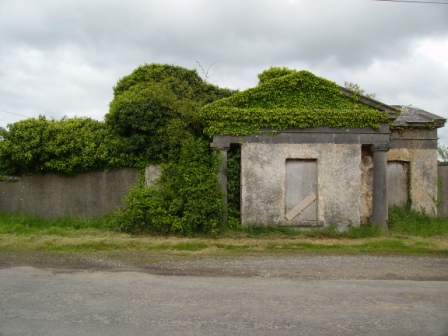
|
| Danesfort | A residence of the Brown family occupied by Henry Brown in 1814, by Mrs Brown in 1837 and by Henry Brown circa 1840. John S. Brown is recorded as the occupier at the time of Griffith's Valuation, holding the property from the Honourable C.B.C.S. Wandesford. It was valued at £8. | |
| Castle Matrix | In 1837 Lewis writes that the flour mill at Castle Matrix ''has been fitted up by the proprietor J. Southwell Brown esq in the most complete manner'' and that the Elizabethan square castle was being repaired. The Ordnance Survey Field Name Book records Castlematrix as a large 2 storey house ''with a new castle 6 stories high adjoining''. John S. Brown held Castle Matrix from Lord Southwell. In the mid 19th century the buildings including the flour mills were valued at £90. In the 1853 sale rental which includes a lithograph, the castle is described as having been repaired and added to "regardless of expense. There are 9 bedrooms in the Castle, besides dressing closets, bathrooms, water closets, a large dining room, drawing room and library with extensive suites of servants' apartments, and the entire fitted up in elegant and substanial style". Castle Matrix was the headquarters of the International Institute of Military History and of the Heraldy Society of Ireland until 1991. |

|
| Mount Brown | The main residence of the Brown family of Rathkeale until Castle Matrix was restored in the 1830s. Held by them in fee, the buildings were valued at £23 at the time of Griffith's Valuation. The mansion house at Dromard was occupied by John Walker circa 1840. In 1906 the house was occupied by the representatives of Col Edward Browne. |

|
| Fort William House | Fort William was the residence of a branch of the Odell family in the 18th century. Occupied by Reverend John Graves in 1814. Mrs Graves had a flour mill here in 1837 but T. O'Dell was living at Fort William. The Ordnance Survey Name Book states that this house was formerly the residence of William Brown of Springmount ''at present occupied by a herdsman''. The residence of Richard D. Power in the mid 19th century who held the property valued at £11 from John B. Graves (in Chancery). The home of Goodricke Thomas Peacocke in the 1880s. This house is still extant and occupied. |

|
| Beechmount | Originally known as Mount Morgell and the home of the Morgell family in the 18th century. The residence of the Lloyd family in the 19th century, held in fee and valued at £32 in the 1850s. Seat of Gen.F.Lloyd in 1894. Recorded as the property of Major Langford in 1944 (ITA). Now a stud and racing stable run by the McNamara family. |

|
| Rathkeale Abbey | The residence of J. Hewson in 1837 and previously of the representatives of George Lake [Leake] esq. By the time of Griffith's Valuation the Abbey was in the possession of Daniel Griffin who held it from the representatives of William Lake [Leake]. It was valued at £30. Referred to in 1942 as "a substanial well kept mansion" the property of Major Waller. |
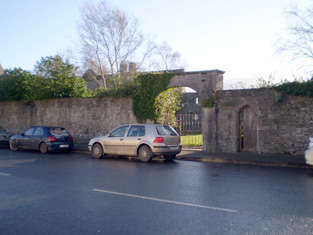
|
| Springmount | Richard S. Croker was the proprietor of this townland at the time of the first Ordnance Survey and Springmount was the residence of William Brown. By the time of Griffith's Valuation Gerard Barry held the house and 56 acres in fee. | |
| Mount Southwell House | Situated near the town of Rathkeale this house was the residence of Francis Brown in 1837 and was still in his possession in the early 1850s but leased to Edward John Collins. It was valued at £24. This house passed to the Hill family of Graig through marriage. | |
| Wilton | The home of W.K. Brown in 1837 and of Edward Brown at the time of Griffith's Valuation when the buildings were valued at £16. | |
| Cappagh | Eyre Lloyd of Wales and William Hammond of Dublin were proprietors of this townland circa 1840. At that time Robert Peppard lived at Cappagh House which is described as an irregular two storied house, part of it built 120 years previously with later additions. Robert Peppard was still resident at the time of Griffith's Valuation when the house was valued at £14+. Robert Peppard was married to Anne Brown of nearby Mount Brown. Whelan writes that the Peppards had lived at Cappagh from the early 18th century. The last family member to live at Cappagh died in 1938. The house has had a number of owners in the 20th century and the interior was badly burnt by fire in 1983 but has since been restored. |

|
| Court Lodge | Described as a small lodge, the residence of Tobias Delmege at the time of the first Ordnance Survey. Occupied by Pierce Brown and held from Lord Southwell at the time of Griffith's Valuation when the buildings were valued at £10. This house is now the home of a dairy farmer. |
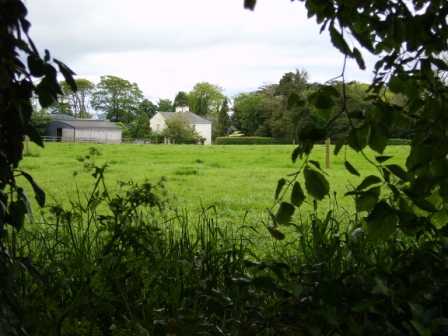
|
| Maryville | Built in 1790 and located on the Monsell estate the residence of Hugh F. Finch in 1837 and of Mrs Finch at the time of Griffith's Valuation when the buildings were valued at £28. In 1906 Captain G.W. Finch occupied the mansion house at Maryville valued at £35. Still in the ownership of the Finch family at the time of the Irish Tourist Association survey 1943. This property is now known as Maryville stud. |

|
| Ballymurphy | Occupied by Eyre Powell in 1837 and by the Reverend George Peacock in the early 1850s and held from Edward C. Villiers. |

|
| Fort Etna | The home of the Peacock family in the 19th century, although J. Waller O'Grady was resident in 1837. At the time of Griffith's Valuation it was occupied by Mrs Peacocke who held it from Charles Leslie, valued at £30. Occupied by Edmund White in the 1870s Bence Jones records that it later became the home of the Reilly and Peart families. The original house is now a ruin. | |
| Greenmount | Built in 1770, a two storey house, home of the Green family and held from the Peacockes. In 1786 Wilson refers to the seat of Mr. Greene, within half a mile of Patrickswell. which he calls Graig. The buildings were valued at £42 at the time of Griffith's Valuation. Sold by the Greens in 1947. In the 1960s the house was demolished and a large modern house built instead by the Earl of Harrington. |

|
| Jockeyhall | A Blackall residence in the 18th century, by the mid 19th century Jockeyhall was on the Tuthill estate and occupied by Patrick Dundon. This house was included in the sale of the Tomkins estate in 1861 when held by the representatives of George Tuthill. |
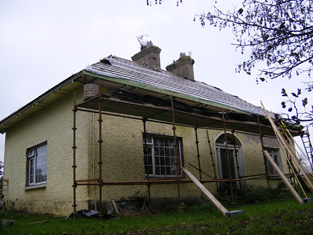
|
| Richmond Villa | This house valued at £16 in the mid 19th century was occupied by the Westropp family from at least 1814, although a Mrs Wallace was in residence in 1837. The Reverend Fitzgerald records a Mr William Wallace as resident in the 1820s and that the house was built about 70 years previously. It was situated on the Tomkins estate. | |
| Newborough | A house on the Dunraven estate occupied by the Reverend J. Croker in 1814 and by members of the Wilson family in 1837 and the 1850s when the buildings were valued at £40. |

|
| Duane Ville | The residence of Alexander O'Grady Rose, held by him in fee at the time of Griffith's Valuation when it was valued at £7. It is no longer extant. | |
| Cooper Hill | The residence of James Cooper in 1814 and occupied by Mrs [Honora] Cooper in 1837. Inherited by James Cooper Tuthill circa 1844 who then assumed the surname Cooper. The house was valued at £45 at the time of Griffith's Valuation and in 1906 when it was occupied by James Cooper. It was advertised for sale in ''Country Life'' (28 April 1955), bought by Cement Ltd who ran a model dairy farm on the property for some years. A large dairy enterprise still operates on the property. The house is a ruin. |

|
| Faha | A property that was in the possession of the Tuthill family from the early 18th century, Wilson refers to it as Mr. Tuthill's seat in 1786. Occupied by Christopher Tuthill in 1814 and by his son George in 1837. Held by George Tuthill in fee at the time of Griffith's Valuation when the buildings were valued at £60. Thompson Russell lived at Faha in the second half of the 19th century. Valued at £52 in 1906 and occupied by George Taylor who held it with 308 acres of untenanted land. It is now a ruin. |
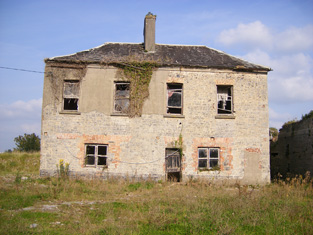
|
| Corcamore | A house situated on the Barker estate and occupied by Thomas Gleeson in the mid 19th century and valued at £18. [Grid reference is approximate]. | |
| Cragbeg | A house situated on the estate of Lord Clarina, occupied by Vokes in the 1770s and in 1786. It was leased to the Vandeleur family in the mid 19th century. Major Thomas Vandeleur was the occupier and the buildings were valued at £38. Occupied by Richard Parson in 1814, by G. Vandeleur in 1837 and by William Henry Harkness in the 1870s. Slater notes Lieut-Col. Lionel E. Massey as the owner in 1894. Still extant and occupied. |

|
| Elm Park | The records suggest that this house was built post 1814 and pre 1837 though there may have been an earlier property as Wilson refers to "Elm" as the seat of General Massey in 1786. Bence Jones writes that it was an early 19th century house. It was the home of the Massey family, Barons Clarina, in the 19th century. The buildings were valued at £90 at the time of Griffith's Valuation and in 1906. Bought by Patrick King in 1925 and home of the King family until 1956, now demolished. |

|
| Tervoe | Bence Jones writes that the house was built in 1776 by Colonel W.T. Monsell MP on the site of an earlier house. Wilson refers to it in 1786 as "the pleasant seat of W.T. Monsell". In 1894 Slater notes it as a residence of Lord Emly. A De La Poer grandson of the 1st Baron Emly succeeded to Tervoe in the 20th century and it was demolished in the 1950s. A detailed description of the interior of the house is given by the Irish Tourist Association surveyor in 1943. |

|
| Bettyville | Occupied by John Lee in 1814 and held by his son William Norris Lee in fee at the time of Griffith's Valuation and valued at £11+. Fitzgerald describes Bettyville in the 1820s as a 'handsome thatched cottage' occupied by Captain John Franklin. This house was the home of the Revrend John T.N. Lee and valued at £13 in 1906. | |
| Attyflin | A mid 18th century house, Wilson refers to Atthyflin as the seat of the Westropps in 1786. The house was occupied by Hamilton Jackson at the time of Griffith's Valuation and held from John Westropp. The buildings were valued at £50. In 1943 this house was owned by Mrs A. White, nee Massy Westropp and its contents at this time are described by the Irish Tourist Association surveyor. Home of a branch of the Hewson family in the 20th century. It is still extant. |

|
| Spring Lodge/Springfort | Dickson Esq was occupying a house at Ballybronoghe in the 1770s and in 1786. Spring Lodge was occupied by George Massey at the time of Griffith's Valuation and held from the Court of Chancery. George Massey was possibly the younger brother of the 3rd Lord Clarina. It is labelled Spring Lodge on the 1st edition Ordnance Survey map but as Springfort on the 25-inch edition of the 1890s. It is still extant and occupied. |

|
| Ballyclogh | The home of a branch of the Morony family during the 19th century. Occupied by James Todd in the early 1850s who held the property valued at £38 from the Moronys. An occupied house is still located at this site. |

|
| Ballyclogh Lodge | Ballyclogh House and Lodge are both marked on the first Ordnance Survey map of county Limerick. At the time of Griffith's Valuation John Russell held land in the townland with associated buildings valued at £12 from Michael Furnell. There were also mills in the townland valued at £35. Valued at £10+ in 1906 when occupied by George Furnell, Ballyclogh remained in the possession of the Furnell family until 1973. | |
| Derryknockane | George Gloster held this house in fee at the time of Griffith's Valuation when the buildings were valued at £20. | |
| Greenhills | Occupied by Thomas Sherlock in 1814 and by Peter Franklin who held the house valued at £10 and 177 acres from Jeremiah Tuthill, scond son of John Tuthill Villiers. A house is still extant at the site. | |
| Lemonfield House | Sometimes spelt Leamonfield, this house was the home of a junior branch of the Bevan family in the first half of the 19th century. Griffith's Valuation records Thomas Bevan as the occupier holding the property from the Reverend William Lloyd. It was valued at £14. ''Burke's Irish Family Records'' refers to Arthur Russell of Lemonfield, sixth son of John Norris Russell of Limerick. He died 1890. The house is no longer extant. | |
| Fort Elizabeth | Occupied by John Cripps in 1814 and the residence of the Reverend John Croker in 1837. William Croker was the occupier at the time of Griffith's Valuation when it was held from the representatives of James O'Sullivan and valued at almost £16. A substantial farm remains at the site. | |
| Monaster House | This house was the home of Michael Furnell in 1803. By 1814 the house on the Vandeleur estate, was leased to John Cantillon Heffernan . At the time of Griffith's Valuation, the buildings at Monaster were valued at £35 and leased by John Cantillon from the Vandeleur estate. In 1943 the Irish Tourist Association surveyor refers to a story concerning ghostly activities and that the house had been "pulled down" a short time previously. Much of the farmyard building complex survives. |

|
| Ballycummin | Roche Castle was a residence of Sir David Roche at the time of Griffith's Valuation held from the Bishop of Limerick and valued at £30. | |
| Cloghacloka | A house valued at £12, in the possession of the representatives of Pat D'Arcy and held from the representatives of Major Peacock, at the time of Griffith's Valuation. Some farm buildings are still extant at the site. | |
| Rockfield | Situated on the estate of Edward C. Villiers, this house was the home of a branch of the Blennerhassett family in the mid 19th century. It was named Rock View on the first Ordnance Survey map. The Ordnance Survey Field Name Book refers to Rockview as a "plain thatched cottage built in 1819". On the later 25-inch map the house is labelled "Rockfield House". Slater, in 1894, refers to it as the seat of R.B. Blennerhassett. In 1906 Rockfield was described as a mansion house and valued at £22. It was occupied by Richard A. Blennerhassett. A house is still extant at the site. | |
| Fedamore | A house known as Fedamore Cottage is marked on the first Ordnance Survey map. By the early 1850s John and Edward Synan were the occupiers of a house valued at £27 in Fedamore townland, which they held from Colonel Wyndham. The property is shown as Fedamore House on the 25-inch map of the 1890s, by which time it was the residence of J.G. Kelly. It is still extant and occupied. | |
| Friarstown (New) | A 2 storey house with offices which was built in 1826 by Vere Hunt on the townland boundary between Friarstown and Friarstown North. It was the residence of Vere Hunt at the time of Griffith's Valuation, held in fee and valued at £20. No house appears to exist at this location now. |
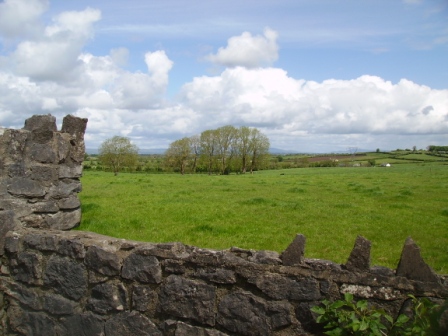
|
| Kilpeacon | Lewis writes that the manor was granted to William King in the reign of James I and that "the late proprietor" had erected a handsome mansion which was now the "property and residence of Cripps Villiers". In his will dated 1704 William King refers to his niece Mary Villiers. The Ordnance Survey Field Name Book states that Kilpeacon House was the property of Edward Villiers, Dublin, and was occupied by Miss Deborah Cripps. Built in 1820 it was a large, commodious building of 2 stories. It was the residence of Edward C. Villiers at the time of Griffith's Valuation, held in fee and valued at £60. Bought by Major George Gavin in the early 1850s from the Villiers and the residence of his son Montiford W. Gavin in the early 20th century. The Irish Tourist Association surveyor writes in 1942 that this house was completed in 1799. The owner was Mrs O'Kelly, her husband having purchased the house in 1927 from the Gavins. This house is still extant and occupied. |
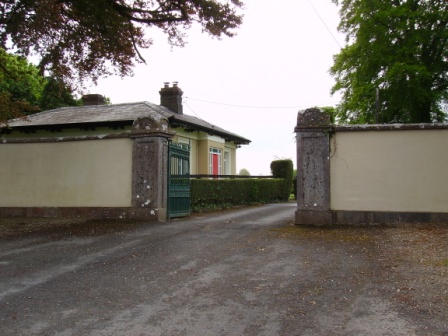
|
| Drombeg | A house located on the estate of the Earl of Sandwich at the time of Griffith's Valuation and occupied by John Mulcahy, when it was valued at £11. [Grid reference is approximate]. | |
| Camas | The seat of the Bevan family located on the estate of the Earl of Limerick. At the time of Griffith's Valuation, it was held by Frederick Bevan from the Earl of Limerick and valued at £29. The house is now demolished but the farm buildings remain. |

|
| The Grange | The home of the Grady/O'Grady family in the 18th and 19th century. In 1786 Wilson describes it as "the beautiful and well-improved seat of Standish O'Grady". It was inherited by the Crokers in 1861. Occupied by Standish [O'] Grady in 1814 and Henry O'Grady in 1837 and at the time of Griffith's Valuation. The buildings were valued at £77 and the property was held in fee. In 1894 it was noted by Slater as the seat of Captain Edward Croker. This house was described as in very good repair even though it had not been occupied for a number of years preceding the Irish Tourist Association survey of 1942. The house is now a ruin. |

|
| Cahir Guillamore | The seat of the O'Grady family from the mid 18th century acquired through marriage with a member of the Hayes family. Held by the Viscount Guillamores in fee and valued at £50 in the early 1850s. Viscount Guillamore was recorded as the occupier in 1906 when the house was valued at £48. The Irish Tourist Association surveyor in 1942 refers to this house as been unused since 1922 when the estate was divided by the Land Commission. All the fittings has been removed and only the shell of the house remained. The house is now a ruin. |

|
| Dooneen | The Reverend Fitzgerald writes that this house was "lately" built by Villiers Peacocke. The Ordnance Survey Name Books records 1820 as the date of its erection. Villiers Peacocke was still in residence in 1837 and Griffith's Valuation records him holding the property in fee. The buildings were valued at £18. It was included in the sale of the life estate of Eugene Kieran in the Land Judges' Court in April 1890 when the house was described as "a very good dwelling house.....suitable for a gentleman's residence". The sale was adjourned. A house is still extant at the site. | |
| Ballynagarde | The seat of the Croker family from early in the 18th century. Bence Jones writes that the house was built in 1774 and that it became a ruin during the 20th century. It was valued at £70 in the mid 19th century and held in fee by John Croker. The seat of H.S. Croker in 1894. By 1906 this house was valued at £119+ and was occupied by Courtenay Croker. The Irish Tourist Association Survey records the occupation of this house by the Defence Forces in 1942. It is now a ruin. |

|
| Edwardstown | Edwardstown was the residence of John Russell in the early 1850s held by him in fee and the buildings were valued at £18+. |

|
| Roxborough | Occupied by William Westropp in 1814 and Lewis refers in 1837 to the ''fine mansion and demesne'' of the Honourable J. P. Vereker. The Ordnance Survey Name Book refers to the rebuilding of Roxborough by Major Vereker in 1832 at the expense of approximately £1200. Viscount Gort held Roxborough in fee at the time of Griffith's Valuation when it was valued at £40. The house was advertised for sale in June 1852 and again in June 1853. Possibly bought by the McMurrays who were certainly resident by 1862. In 1894 Slater refers to it as the seat of A. Crawford. Now a more modern house appears to be located at this site. |
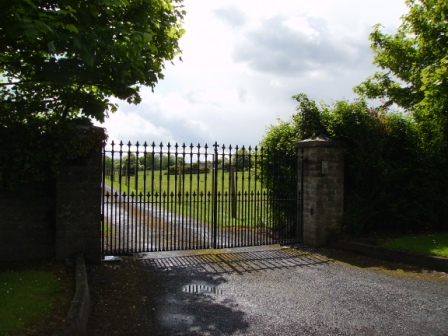
|
| Lickadoon | The Ordnance Survey Field Name Book records the date for the building of this 3 storey house, the seat of George Parsons, as circa 1779 at a cost of about £1000. By the time of Griffith's Valuation John O'Brien was residing at Lickadoon which he held from George Biggs. The buildings were valued at £20. In 1942 this house was the property of Mr William Leahy, a solicitor, and formerly the residence of the the Urquhart Hunts (ITA). | |
| Glen View | John Russell was the occupier of a house at Glen at the time of Griffith's Valuation. He held the property from Miss Abigail Briscoe and the buildings were valued at £15+. Slater also recorded Glenview as the seat of John Russell in 1894. This house is now demolished. |

|
| Williamstown Castle | Lewis refers to Williamstown Castle having been restored by the Messrs Pain, architects. In the early 1850s John Croker is recorded as the occupier, holding the property in fee. The buildings were valued at £33. It is now a ruin. | |
| Rockstown House | A building valued at £18 at the time of Griffith's Valuation, occupied by Chartres Brew Maloney and held from James Kelly. Chartres Brew Molony, second son of Patrick Molony of Cragg married his cousin Alice, daughter of James Barry of Rockstown, in 1841.Rockstown Castle was inherited by James Kelly's grandson, Basil James Kelly, in the 20th century and was left by him to his nephew Derrick Morley in 1945. It is still extant |

|
| Ballysheedy | A 3 storey house built circa 1749, occupied by FitzGillon in the late 1770s and noted by Wilson as the seat of Gibbon Fitzgibbon in 1786. It was the residence of Michael Furnell in 1814 and occupied by Gibbon T. Fitzgibbon in the early 1850s, when it was held from Admiral Proby and valued at £22. It was ruinous by the publication of the 25-inch Ordnance Survey map of the 1890s. | |
| Tivoli | Marked on the first Ordnance Survey map, Tivoli Cottage valued at £48 was occupied by Major Wheeler and held from Sir Matthew Barrington at the time of Griffith's Valuation. Since 1952 it has been the centre of a boys' secondary school known as Villiers School. |

|
| Ashbourne | A 2 storey house located on the Earl of Limerick's estate, this house was the seat of the Honourable Robert O'Brien in the 1830s. It was occupied by Richard Wilson in the early 1850s and held from Eliza Harvey. Garrett Hugh Fitzgerald's interest in the property was advertised for sale in May 1851. By the 1870s it was the home of the Synan family. This house is now demolished. | |
| Ballynoe | An 18th century house built by the Cox family. This house valued at £39 was the home of William Cox in the 1850s and 1870s. At the time of Griffith's Valuation it was held from the Court of Chancery. Bence Jones records this house as now derelict. Described as the Irish Tourist Association surveyor in 1944 as a "grand" Georgian house but in a very bad state of repair. |

|
| Finniterstown | Mr Edmund Hogan was resident at Finniterstown in 1814. The Ordnance Survey Field Name book records the building of a 2 storey house at Finneterstown in 1833 and that it was occupied by William Fosberry circas 1840. Located on the St Leger estate this house was occupied by Frederick Maunsell in the early 1850s and was valued at £11. | |
| Ballyknockane | The home of the Scanlan family from at least 1814 when Michael Scanlan was resident. Occupied by William Scanlan at the time of Griffith's Valuation, held by him in fee and valued at £25+. In 1906 William Scanlan held 145 acres of untenanted land and a mansion valued at £22 at Ballyknockane. Residence of Miss Reynolds in 1944. | |
| Ballynahaha | The residence of Mathew Scanlan circa 1840. Located on the Scanlan estate in the mid 19th century, occupied by David Bennett and valued at £11. | |
| Liskennet | Nicholas Monckton of Liskennet made his will in 1721. Patrick Heffernan lived at Liskennet in 1814 and Roger Sheehy circa 1840. In the 1850s the house was ccupied by Francis S. Walker, valued at £15+ and held from John Anster, Trinity College Dublin and Ellen Heffernan. The sale rental of the Walker/Anster estate in 1873 refers to Lots 1 and 2 as formerly part of the estate of Michael Heffernan of Camas. By the 1870s Liskennet was in the possession of the Conyers family. The old stable block is still extant but the house is a modern structure. |
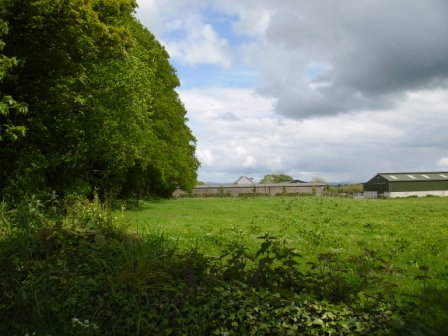
|
| Ballynakill | A house on the Pigott estate, burnt by the insurgents on 24 February 1822 according to Fitzgerald as it had been converted into a soldiers' barrack. It was occupied by Richard Pierce Power in the early 1850s and valued at £14. |

|
| Adare Manor | Early 18th century house replaced by a Tudor-Revivalist style building in the mid 19th century, the home of the Quin family and Earls of Dunraven. In 1786 Wilson describes the original house as "a very noble structure with fine and extensive demesnes". At the time of Griffith's Valuation valued at £130 and in 1906 the buildings at Adare Manor were valued at £182. Now functions as a hotel. |
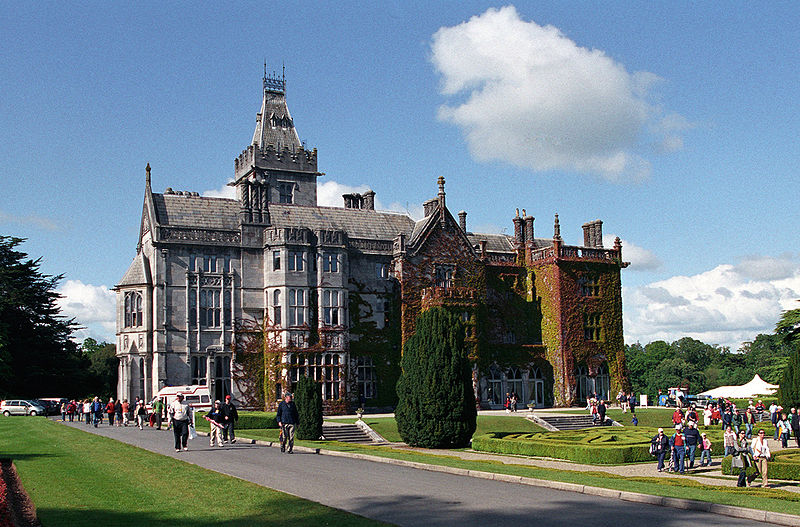
|
| Frankfort | Samuel Adams was living at Frankford, Newcastle, in 1814. The residence of Richard Standish circa 1840 and of John White who held it in fee in the early 1850s. The buildings were valued at £9. This house is still well maintained and occupied. | |
| Kilmore | Brian de Breffny writes that the back section of Kilmore House is part of the 17th century house built by the Moncktons. The front part was built by the Tuthills in the mid 18th century. George Tuthill purchased the house from Edward Monckton in 1737. The Tuthills had previously held it on lease. Occupied by Thomas Lynch in 1814 and by Colonel William Jones in the early 1850s, when the property was held from Elizabeth Tuthill and valued at £15. In 1906 Kilmore was the residence of Anne Isabel O'Grady. This house is still extant and occupied. |
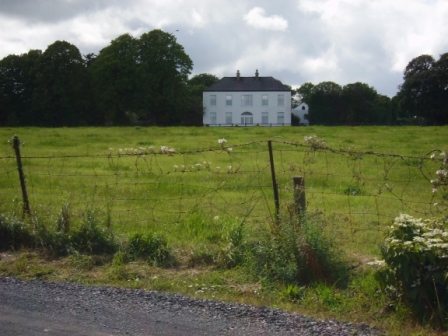
|
| Ballyneale | Bence Jones writes of this house having an early 19th century appearance. Occupied by John Cox and held from the Honourable John Massy in the early 1850s. The buildings were valued at £13+. At the end of the 20th century this house was the home of Lewis Glucksman. Sold by the Glucksmans in 1998. In 2008 it was placed on the market again by its current owner David Pearl for 10,000,000 euro. see http://www.michaelhdaniels.com/index.cfm?fuseaction=propdetails&Prop_RefId=39 |

|
| Glenwilliam | A house built in 1797 by the Reverend William Massy, second son of the Reverend Godfrey Massy. Occupied by George Massy in 1814. The residence of Mary Anne Massy at the time of Griffith's Valuation, held from the Court of Chancery and valued at £38. In the later 19th century it was the home of the Atkinson family. Slater noted it as the seat of Thomas D. Atkinson in 1894. This house is still extant and occupied. |

|
| Lisduane | The seat of Walter Mason, situated on the estate of General Dixon [Dickson], circa 1840. Occupied by John [Leland] Mason at the time of Griffith's Valuation and held by him from the Court of Chancery. The buildings were valued at £12. William Harte Mason of Cooleen, Bruree owned 190 acres in the 1870s. A house and farm are still extant at the site. | |
| Kilbeg Lodge | The seat of John Scanlan circa 1840 and of Sarah Scanlan in the early 1850s, held from William Scanlan and valued at £14. In 1906 occupied by William Scanlan and valued at £10. | |
| Coolrus House | The residence of Richard Harte circa 1840 and of James Lynch in the early 1850s who held the property and 186 acres from the Court of Chancery. The house has diminished in size by the publication of the 25-inch edition Ordnance Survey map in the 1890s and it is no longer extant. | |
| Castletown Conyers | The seat of the Conyers family, occupied by C. Conyers in the early 19th century. By the time of Griffith's Valuation the house appears to be in use as an auxiliary workhouse, held by the Croom Guardians from William Bailey, medical doctor, and valued at £25. In 1894 it was the residence of Charles Conyers. |

|
| Kilgobbin | Occupied by George Fosberry in the early 1850s held from the Earl of Dunraven and valued at £30. An inventory of the furniture at Kilgobbin was compiled in June 1923 for A.P.Pollock. It is still extant. | |
| Mondellihy | Occupied by George Fosberry at the time of Griffith's Valuation, held from the Earl of Dunraven and valued at £15. By the end of the 19th century this house was the home of Peter David Fitzgerald (1855-1935), a younger son of George Fitzgerald 1st Baron Fitzgerald of Valencia and grandson of the Knight of Kerry. |

|
| Rineroe [Fort Union] | The house at this site is labelled Rineroe on the 1st edition Ordnance Survey maps but as Fort Union on the later 25-inch map of the 1890s. It was held by John Christy from the Dunraven estate at the time of Griffith's Valuation and valued at £24. It is still extant and occupied. |
![Photo of Rineroe [Fort Union]](https://landedestates.ie/storage/img/orig/2850.jpg)
|
| Castle Ievers | The Ievers were living at Castle Ievers, originally known as Tullerboy, from the mid 18th century. Bence Jones dates this house from the early 19th century. Robert Ivers was resident in 1814, 1837 and at the time of Griffith's Valuation when the buildings were valued at £32. The property was held from William Maunsell. The Irish Tourist Association surveyor wrote in 1943 that much of Tullerboy Castle was demolished in the 1860s to make way for the present building. The owner in the 1940s was Roderic Haines. |

|
| Coolboy | A herd's house and offices situated on the St Leger estate was occupied by Henry Ievers at the time of Griffith's Valuation when the buildings were valued at £14+. Coolboy was occupied by the representatives of Robert Cleary in 1906. A substantial farm is still extant at the site. | |
| Cooleen | At the time of Griffith's Valuation William Hart Mason held the townland of Cooleen amounting to 88 acres in fee. The buildings were valued at £12. |
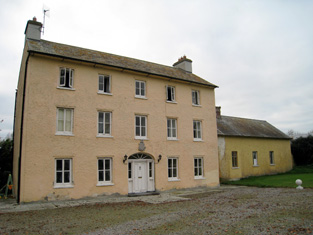
|
| Cherrygrove | Cherrygrove was the home of Edward Cripps in 1814 and of J. Barry in 1837. At the time of Griffith's Valuation it was occupied by Edward John Sheehy who held the property from Robert Harding. The buildings were valued at £21+. The Misses Sheedy were still in residence in the 1940s. A building is still extant at the site. | |
| Belview/Bellevue | A home of the Yielding family, occupied by Richard M. Yielding in 1814 and 1837 and by Timothy Hartigan who held the property from James Barry at the time of Griffith's Valuation. The buildings were valued at £13 at that time. Bought by the Delmeges in the early 1850s. The original house is not extant. | |
| Carass House | Caherass/Carass House was the seat of the Roche family from the early 19th century. The family had a large flour mill in the townland of Caherass and the house was situated closeby but in the next townland. At the time of Griffith's Valuation Sir David Roche held the house and 235 acres in Ballouragan from Messrs Barrington and Delmege. In 1894 it was the seat of Sir David V. Roche. In 1943 the Irish Tourist Association surveyor wrote that the house was accidentally destroyed by fire "many years ago". | |
| Carass Court | ''Burke's Irish Family Records'' states that Jeffrey Browning purchased Carass Court, from Lord Carbery. Leet records Jeffrey Browning as the proprietor of Carass Park in 1814. Jeffrey/Geoffrey Browning was married to Frances, sister of Sir David Roche, 1st Baronet. By the time of Griffith's Valuation Thomas Wise Browning was the occupier and he held the property, valued at £50, from Sir David Roche. The Brownings were still resident at Carass Court in the 1940s but the house was later demolished. |
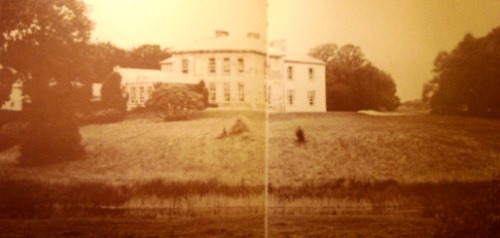
|
| Clorane | A house occupied by Henry Hunt in 1814. Lewis describes Clorane as a "fine old house belonging to the Hunt family". By the time of Griffith's Valuation Edward Browning was leasing the house and 280 acres from Sir David Roche. In the 1870s in the possession of Patrick Hartigan. Old farm buildings are still located at the site but the house is a modern structure. |
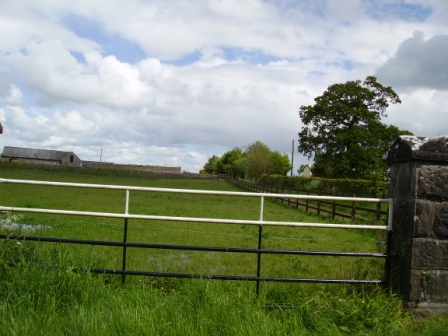
|
| Croom House | Croom House was the home of the Lyons family in the 18th and 19th centuries. The house of James D. Lyons was valued at £48 in the early 1850s and he had a flour mill valued at £75 closeby. He held the property from John Croker. Described in 1943 by the Irish Tourist Association surveyor as a beautiful mansion on the left bank of the Maigue river, it was then in use as a military post. The house is still extant and occupied. |

|
| Islandmore | Tooreen, located just south of the town of Croom, was the residence of James D. Lyons in 1814 and 1837. By the early 1850s this house, then known as Islandmore, was occupied by Robert Maxwell, valued at £60 and held from Miss Catherine Giles. It later became the home of the Kelly family and Slater refers to it as the seat of John Roche-Kelly in 1894. Colonel Basil Roche Kelly was resident at the time of the Irish Tourist Association survey of 1943. The surveyor wrote that the house was originally Georgian but had suffered many alterations. |
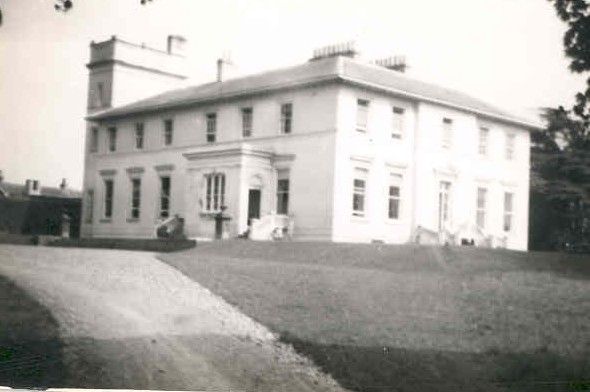
|
| Croom Castle | Originally a Fitzgerald Castle, subsequently granted to the Duke of Richmond who sold it to John Croker in 1721. Reverend Fitzgerald writes that Croker was agent to the Duke. A residence was built with some of the stone from the old castle. Situated on the outskirts of the town of Croom this house was occupied by Samuel A. Dickson in the mid 19th century who held it from the Crokers. The buildings were valued at £30. Sold in the late 1880s to the Lyons family and bought by Michael Corry in 1936. Now functions as self catering accommodation. see http://www.croomcastle.com/history.html |

|
| Glenbevan | Lewis records J. Bevan as the proprietor of Glen-Bevan in 1837 and Joseph Bevan occupied the house and 173 acres at the time of Griffith's Valuation. The property was located on the Evans estate. The residence of Mr John Hedderman in 1943, this house is still extant and occupied. |

|
| Clogher West | A house occupied by John Fitzgerald and held from George Whitelock at the time of Griffith's Valuation. The buildings were valued at £12. The original house does not appear to be extant. | |
| Abbeyville | A house located on the Finch estate and the home of the White family in the 19th century. Occupied by William White in 1814 and Richard White in 1837 and at the time of Griffith's Valuation when the buildings were valued at £26. Later the home of Henry Ievers, a younger brother of Robert Holmes Ievers, of Castle Ievers. The original house is not extant but a house still exists at the site. |
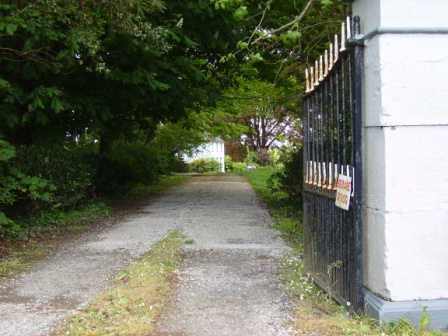
|
| Ballynanty | Ballynauty was the residence of Mrs Creed in 1837 and of Charles W. Smith in the early 1850s. He held the property from the Trustess of Charles Smith and the buildings were valued at £37 Still recorded by Slater as a Smith property in 1894. . The original house is not extant. | |
| Rockbarton | Also known as Mount Prospect, Fitzgerald describes Mount Prospect as the "magnificent seat and demesne of the present Chief Baron". Lewis describes Rockbarton as the "elegant mansion of Lord Guillamore". It was occupied by John Low at the time of Griffith's Valuation who held it from the Viscount. It was valued at £75. By 1906 the value of the house was reduced to £60 and it was then occupied by Lord Fermoy. The Irish Tourist Association surveyor records the sale of this house to Mr Barry in 1922. It remained in his possession until it was demolished in 1941 and the fittings sold to a Limerick builder. He writes that it was one of the "showplaces of Ireland" with a grand staircase of marble and that it had been renovated at a cost of £70,000 circa 1912 by the Honourable Nigel Baring who was married to a daughter of Lord Fermoy.The house is now a ruin. | |
| Dunnaman | Matthew O'Flaherty held buildings valued at £13+ and 219 acres from James D. Lyons at the time of Griffith's Valuation. Grid Reference is approximate. | |
| Carrigeen | John Christy held a house valued at £21 and 513 acres at Carrigeen from the Earl of Dunraven at the time of Griffith's Valuation. A modern farm is extant at the site now. | |
| Dollas Upper | Mary Blake occupied a house valued at £12+ and 48 acres on the Langford estate at the time of Griffith's Valuation. This property is labelled Dollas House on the Ordnance Survey map published in 1942. Unroofed buildings are still extant at the site. | |
| Ballinacurra House | Marked on the first Ordnance Survey map and situated on the outskirts of Limerick city this house was occupied by Edmund Palmer at the time of Griffith's Valuation when it was valued at £23 and held from Patrick O'Shea. Later the home of Hugh Massy. He died at Ballinacurra in 1881. Now in use as an office. |
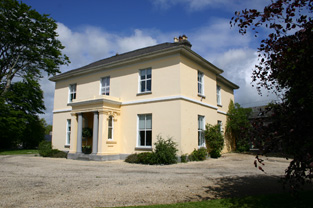
|
| Fanningstown Castle | An 18th century house which was the home of the Jackson family. Henry Lee is recorded as resident at Fannings-town in 1814. This house was demolished and a battlemented building was erected in the bawn of the old medieval castle by Hamilton L. Jackson in the 1850s and offered for sale in 1860. Bought by David Vandeleur Roche of nearby Carass in the 1860s. Occupied by James Fitzgerald Bannatyne in 1906 who held the mansion house valued at £31+ and 359 acres of untenated land. The castle now provides self catering accommodation and can be hired as a venue for functions such as weddings. http://www.fanningstowncastle.com/index.htm |

|
| Grove House | This house appears to straddle the boundary of the parishes of Ballingarry and Rathkeale and the border of the baronies of Connello Upper and Lower. Occupied by Colonel William O'Dell Member of Parliament in 1814 and by Major O'Dell in 1837. By the time of Griffith's Valuation Major O'Dell's estate at Rylanes was in Chancery and Grove House was in use as an Auxiliary Workhouse. It was valued at £35 and held by the Croom Guardians from Robert Maxwell. This house is no longer extant but substanial yard buildings remain. |

|
| The Turret | Lewis writes that the Turret was erected by a branch of the De Lacy family and repaired by Colonel O’Dell in 1683 and was "lately the residence of Major O’Dell". The Ordnance Survey Name Books refer to an inscription on the wall of the building which recorded the O'Dell family inhabiting the building in 1683. It was reputed to incorporate a turret from an old house of the Knights Hospitallers. Thomas O'Dell was resident in 1814 and Mrs O'Dell of the Turret, Ballingarry, died in 1818 according to the church records of that parish. Fitzgerald in 1826 refers to Jackson's Turret, built on a hill and "now nearly in ruins". Bence Jones writes that a porch and wing were added to the building in the late 19th century and that it became a presbytery. Grid reference is approximate. | |
| Dromore Castle | In 1868 the building of Dromore Castle began. It was an elaborate country retreat for the 3rd Earl of Limerick designed by Edward William Godwin. In 1906 this mansion house was valued at £75.10 shillings. The 4th Earl of Limerick did not visit Ireland very much and the castle was sold in 1939. In 1944 the Irish Tourist Association surveyor refers to the castle as the property of Mr M.McMahon, a timber merchant of Limerick, who bought the property in 1941 for a reputed £8,000. By the mid 20th century it had fallen into disrepair and the roof was taken off. Plans to develop the site and to demolish the ruin are current issues discusssed in the local and national press. |
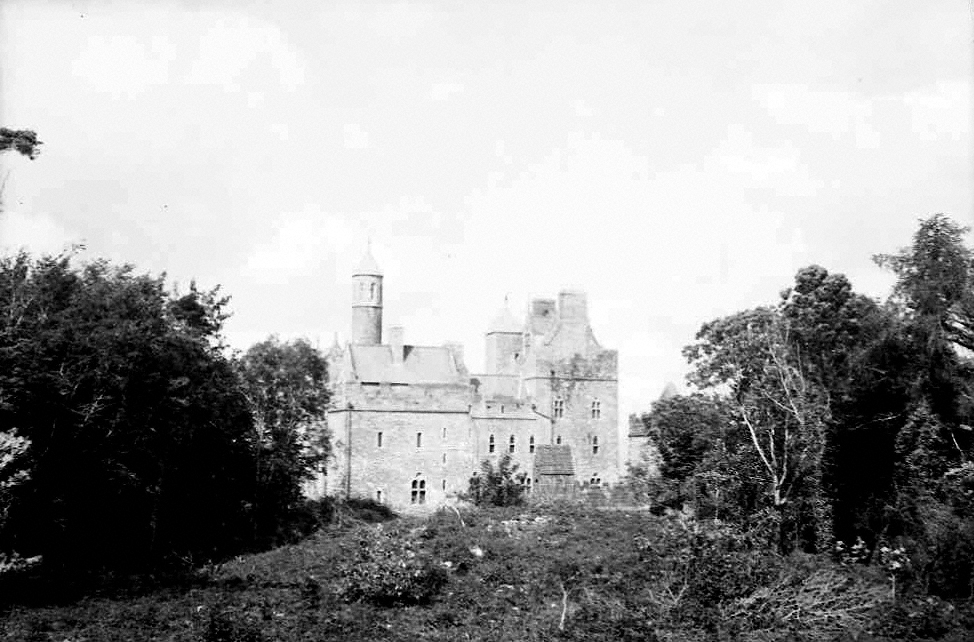
|
| Harding Grove | Occupied by G. Harding in 1814 and H. Harding in 1837. The seat of Mr Harding at the time of the first Ordnance Survey. By the time of Griffith's Valuation a Neill McDonald was in possession of Harding Grove. Neil Macdonald of Steyle Park, Bruree owned 354 acres in county Limerick in the 1870s. Francis H. Wyse is recorded as the occupant of Harding Grove in 1906. |

|
| Cappanihane | This house was occupied by John Mason in 1814, by R. Mason in 1837 and in use as an auxiliary workhouse at the time of Griffith's Valuation, when the buildings were valued at £15. This house was the home of John Parker Graham in the 1860s and 1870s. Another house in this townland, Glenbrook Lodge, was occupied in the early 1850s by Myles Mason and valued at £9+, grid reference R492 318. Mary Hamilton held a mansion house valued at £20 and 41 acres of untenanted land at Cappanihane in 1906. | |
| Athlacca House | A residence of the Ormsby family in the 18th century. On the first Ordnance Survey map the house is marked "in ruins". Also known as Old Court. | |
| Ballylin | Michael Smith was living at Ballylin, Rathkeale, in 1814 and R. Smith in 1837. | |
| Smithfield | Originally a Aylmer residence, later leased by the Smith family. The house was occupied by Richard Smith in 1814 and by R. Smith in 1837, later in the possession of the Fergusons. A 3 storey hand drawn house is depicted on the sale rental map of the Aylmer estate. Smithfield House is now the centre of a working farm run by the Lowe family and offers Bed and Breakfast accommodation. |

|
| Friarstown | The National Inventory of Architectural Heritage states that he house was built in 1827 for David Urqhart Hunt and cost £10,000. At the time of Griffith's Valuation the house was occupied by Henry Hunt who held it from the Reverend Richard Maunsell, valued at £35. This property is now known as Friarstown Stud. |

|
| Ashborough | Lewis records Daniel D. Power as resident at Ash Grove in the parish of Ballingarry in 1837. Held Daniel D. Power at the time of Griffith's Valuation and valued at £16 and in his occupation at the time of the 1854 sale. An old outbuilding remains at the location of this house. |
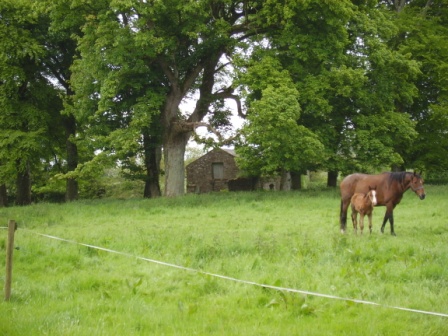
|
| Rosbrien | A home of a branch of the Quin family descended from John Quin, second son of Thady Quin (1645-1726). Wilson, writing in 1786, refers to Rosbrien as the fine seat of Mr. Quin. It is labelled Rossbrien House on both the 1st and 25-inch edition Ordnance Survey maps but is no longer extant. | |
| Inchirourke More | The residence of Hunt Esq in the 1770s and in 1786. Occupied by Edward Hunt in 1814. At the time of Griffith's Valuation, Robert Hunt held the house, valued at £6.5 shillings, and over 500 acres in the townland of Askeaton from Sir Matthew Blakiston. It is still extant. |

|
| Ballyteige | Originally the home of a branch of the Tuthill family, no large house is marked on the first Ordnance Survey map in this townland. The house was leased to David Conyers of Castletown Conyers in 1885 and to Thomas W. Westropp Bennett in the 1890s. It is now available for hire, see http://www.ballyteigue.com/ |
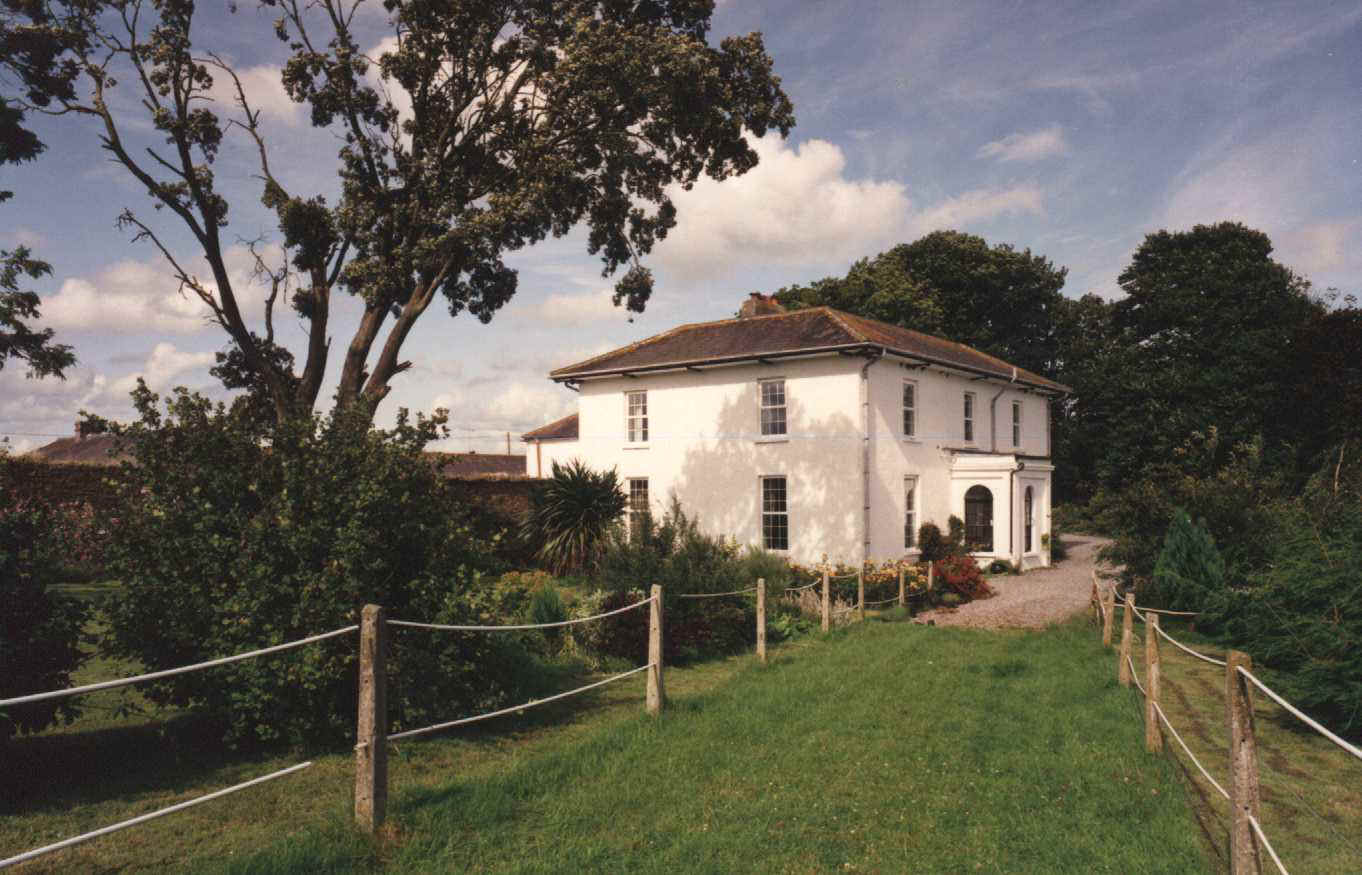
|
| Curraheen | The home of the Stephenson family for some of the 19th century. Slater's Directory of 1846 for the town of Rathkeale records Mr John Stephenson of Curraheen but no Stephenson is recorded in Curraheen South in Griffith's Valuation. |

|
| Rockfield Tower | At the time of Griffith's Valuation held by Tobias Delmege from Lord Southwell and valued at £9. This house is still in use as a residence. |

|

